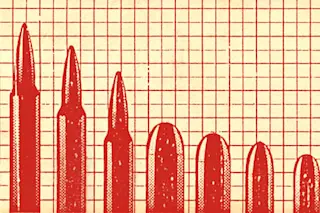Since the 1960s, the mountains of southern Colombia have been home to a war between the government and a leftist guerrilla movement known as the Revolutionary Armed Forces of Colombia, or FARC. The conflict has simmered for decades. Sometimes it flares up in battles with government forces, a terror bombing, or a particularly high-profile kidnapping. Sometimes it fades into the background as cease-fires or negotiations quiet the hostilities. FARC has been fighting for so long that the war has become almost like background noise, says Neil Johnson, a University of Miami physicist who travels to Colombia every year to visit his wife’s family. Even locals have become numb to the conflict. “There’s this war going on, but I didn’t think too much of it. You hear numbers of dead every day, like football results,” Johnson says. “It took me 10 years to realize that maybe there was important information hidden ...
The Mathematics of Terrorism
Seemingly random attacks contain an unexpected regularity: the same numerical pattern seen in Wall Street booms and busts.

Newsletter
Sign up for our email newsletter for the latest science news
More on Discover
Stay Curious
SubscribeTo The Magazine
Save up to 40% off the cover price when you subscribe to Discover magazine.
Subscribe












